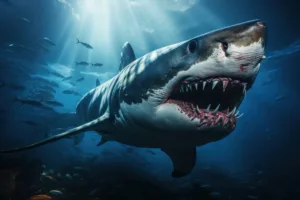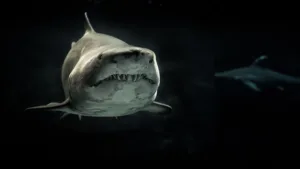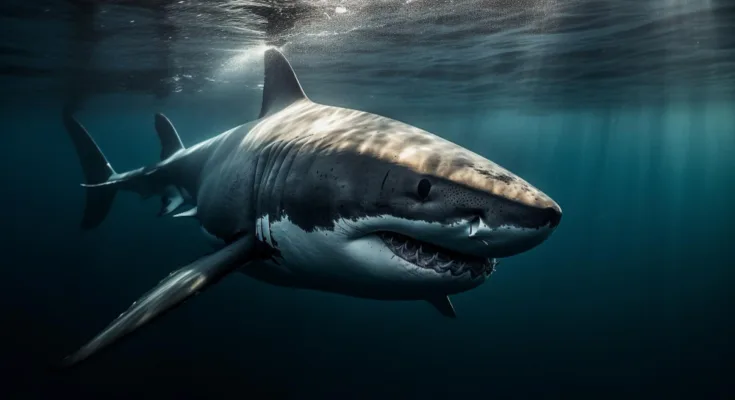The white shark is one of the most prominent symbols of fear and mystery in the marine kingdom. They are the largest predator fish on Earth that makes it an object of much interest and fascination. A wide range of topics will be covered in this article about the great white shark, such as its habitat, physiology, hunting strategies, migration, as well as how the shark plays a vital role in the marine ecosystem.
Habitat and Distribution
Global Presence
The great white sharks are indeed the epitome of a cosmopolitan species, being found in every ocean on the planet. If one looks from the Atlantic to the Pacific, Indian to the Australian, this top of the chain predator has ruled. But most of them do not associate with the very cold sea in Antarctica and the Arctic.
Temperature Preferences
The great white shark is most commonly found in temperate waters, where the climate is of moderate temperature, and their favorite prey including seals and sea lions are abundant. They are not confined by latitude, thus, their presence indicates their ability to tolerate different temperature ranges.
Physiology and Adaptation
Endothermic Nature
The great white sharks are unlike other fish, which are predominantly ectothermic since they are endothermic and have the ability to self-regulate their body temperatures. This rather unusual adaptation enables the organisms to prosper in a wide variety of climatic conditions, from the cold water of California all the way to the tropical seas that surround Australia. In different hunting scenarios, the ability to keep an almost fixed temperature inside their body gives them an overall advantage.
Physical Characteristics
Their smooth body, strong tail, sharp teeth make them terrible hunters. The great white countershading within the darker upper body and the lighter underside helps obtain camouflage and become undetected whilst the whale is tracking its prey to the ocean’s bottom.

Hunting Tactics
Stealth and Strategy
The great white sharks are known for their perfect and undetected hunting skills. Certainly, they are usually found below their prey taking advantage from the cover offered by the dark of the depths of the ocean. They lurk patiently, waiting for the right time to strike, arriving at their target with deadly accuracy.
Breaching Behavior
In a breathtaking display of power and agility, great white sharks are capable of breaching the surface of the water during a hunt. This behavior is often observed when they go after seals near the ocean’s surface. The sudden burst of speed and acrobatic maneuvers make for a spectacular yet deadly exhibition of their hunting prowess.
Migration Patterns
Pacific Ocean Migrations
Great white sharks are migratory, with some exemplary cases having been noticed in the Pacific Ocean. Even individuals could be tracked as they migrated between feeding grounds in Mexico and the more pleasant waters of Hawaii. These migrations are a topic of continual research due to the exact motives behind them.
Global Migration Possibilities
It is reported that great whites that migrate all over the Pacific have been found, and it has been believed that those that undertake migration in different oceans take even longer journey. The patterns and causes of their migration over vast areas of the oceanic divide still captivate the minds of marine biologists.
Role in the Ecosystem
Apex Predator Status
Being apex predators, great white sharks have a vital role of maintaining harmonious balance in the marine ecosystem. They do this by regulating the numbers of their prey, thus helping in maintaining the health and abundance of the… These fine proportions are needed for the well-being of the entire underwater world.
Ecological Importance
The importance of great white sharks in the ecological world goes beyond affecting the prey population directly. It is with such humanists that other marine organisms are lured to supplement their prey, thereby setting off a domino effect that controls the net of life beneath the waves.

Threats and Conservation
Vulnerability and Declining Population
The great white sharks, once regarded as fearsome killers, are now under threat themselves, with their popularity on the list of species ranked as vulnerable by IUCN. Table The major trends as a result of human pressures in global population is diminishing.
Poaching and Fishing Practices
The population of great white sharks has also reduced due to poaching of their fins and teeth. Incidental capture, in some fishing practices, is also a large threat to their survival. Now, attempts to provide the complex with protection and conservation efforts are in full swing in order to solve these problems with these wonderful animals.
Conclusion
The behavior of the great while shark possesses a kind of balance between adaptation, migration, and ecological importance. There has been a lot in terms of information gathered about these apex predators, but there are still many mysteries in their mating behavior, birthing sites, and full range of their habitat. The deeper our understanding of these marvelous creatures, the higher not only the knowledge of our world’s marine life that we achieve but the deeper the understanding of the delicate balance that they hold becomes. The preservation of great white sharks is not simply meant to conserve a species but to maintain the equilibrium of all the marine life.

FAQs
Q: Are sharks great white upon mankind?
A: This leads to interactions with humans but the species hardly ever targets humans as prey.
Q: How do white sharks move during migration?
A: They rely on magnetic fields, ocean currents, and celestial clues, supported by research.
Q: What are the main risks to great white shark populations?
A: Hunting, by catch, and habitat destruction are forms of them.
Q: What is their contribution to marine ecosystems?
A: Apex predators, they balance ecosystems through rating prey population.
Q: How do scientists monitor white shark migrations?
A: Individuals will be monitored by employing tagging and satellite tracking to study their behavioral patterns and migrations.




